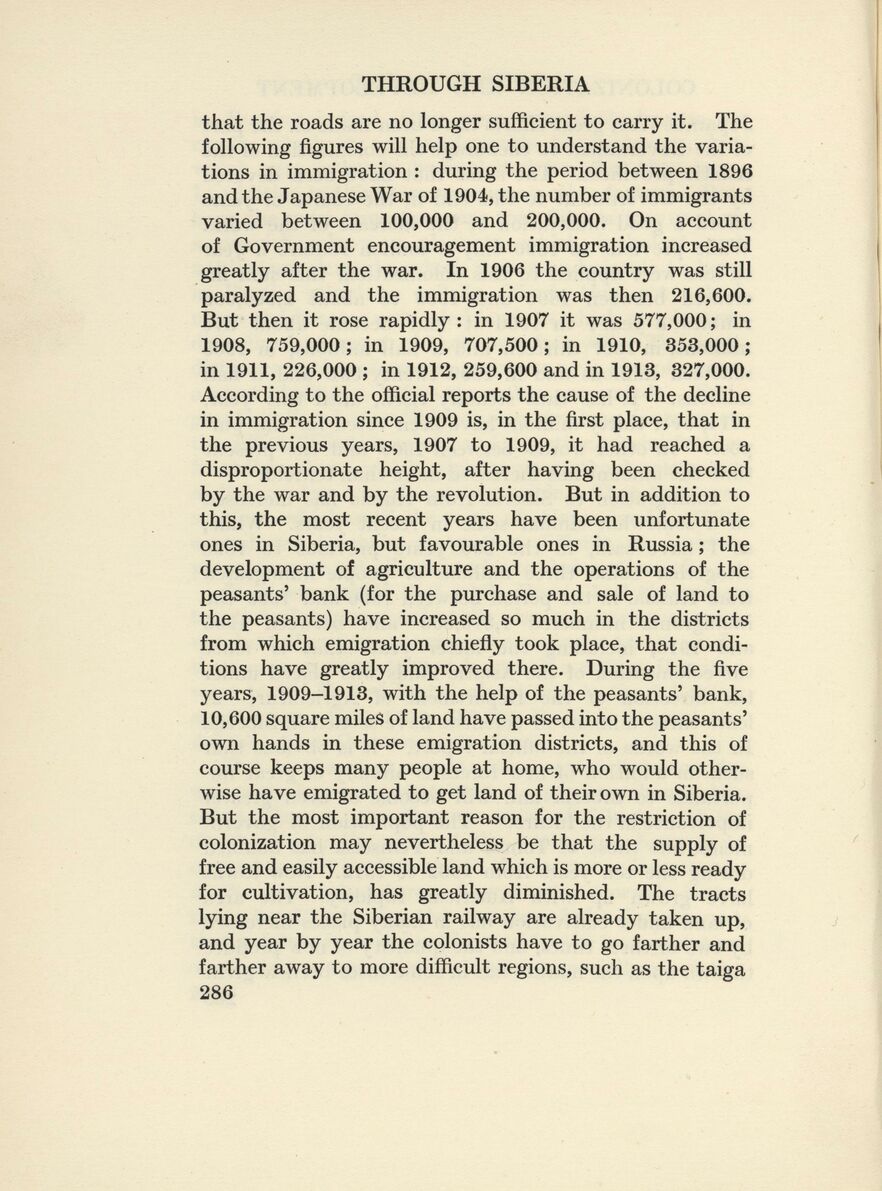
Full resolution (JPEG) - On this page / på denna sida - XIII. The colonization and development of Siberia

<< prev. page << föreg. sida << >> nästa sida >> next page >>
Below is the raw OCR text
from the above scanned image.
Do you see an error? Proofread the page now!
Här nedan syns maskintolkade texten från faksimilbilden ovan.
Ser du något fel? Korrekturläs sidan nu!
This page has never been proofread. / Denna sida har aldrig korrekturlästs.
THROUGH SIBERIA
that the roads are no longer sufficient to carry it. The
following figures will help one to understand the varia
tions in immigration : during the period between 1896
and the Japanese War of 1904, the number of immigrants
varied between 100,000 and 200,000. On account
of Government encouragement immigration increased
greatly after the war. In 1906 the country was still
paralyzed and the immigration was then 216,600.
But then it rose rapidly : in 1907 it was 577,000; in
1908, 759,000; in 1909, 707,500; in 1910, 353,000;
in 1911, 226,000 ; in 1912, 259,600 and in 1913, 327,000.
According to the official reports the cause of the decline
in immigration since 1909 is, in the first place, that in
the previous years, 1907 to 1909, it had reached a
disproportionate height, after håving been checked
by the war and by the revolution. But in addition to
this, the most recent years have been unfortunate
ones in Siberia, but favourable ones in Russia ; the
development of agriculture and the operations of the
peasants’ bank (for the purchase and sale of land to
the peasants) have increased so much in the districts
from which emigration chiefly took place, that condi
tions have greatly improved there. During the five
years, 1909-1913, with the help of the peasants’ bank,
10,600 square miles of land have passed into the peasants’
own hands in these emigration districts, and this of
course keeps many people at home, who would other
wise have emigrated to get land of their own in Siberia.
But the most important reason for the restriction of
colonization may nevertheless be that the supply of
free and easily accessible land which is more or less ready
for cultivation, has greatly diminished. The tracts
lying near the Siberian railway are already tåken up,
and year by year the colonists have to go farther and
farther away to more difficult regions, such as the taiga
286
<< prev. page << föreg. sida << >> nästa sida >> next page >>